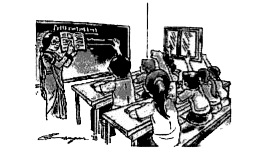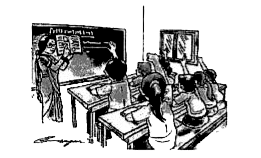2, 3.1, 5.3, 8.6, 13, 18, 25.1
3.1
2
5.3
18
The correct Answer is:D
To find the odd one out in the series: 2, 3.1, 5.3, 8.6, 13, 18, 25.1, we will analyze the pattern in the differences between consecutive terms.
1. Identify the Series:
The series given is:
2,3.1,5.3,8.6,13,18,25.1
2. Calculate the Differences:
We will calculate the differences between consecutive terms:
- Difference between 3.1 and 2:
3.1−2=1.1
- Difference between 5.3 and 3.1:
5.3−3.1=2.2
- Difference between 8.6 and 5.3:
8.6−5.3=3.3
- Difference between 13 and 8.6:
13−8.6=4.4
- Difference between 18 and 13:
18−13=5
- Difference between 25.1 and 18:
25.1−18=7.1
3. List the Differences:
The differences we calculated are:
1.1,2.2,3.3,4.4,5,7.1
4. Identify the Pattern:
The pattern in the differences appears to be:
- The first difference is 1.1 (which is 1.1),
- The second difference is 2.2 (which is 1.1+1.1),
- The third difference is 3.3 (which is 2.2+1.1),
- The fourth difference is 4.4 (which is 3.3+1.1),
- The fifth difference should logically be 5.5 (which is 4.4+1.1).
5. Check the Fifth Difference:
However, we found that the difference between 18 and 13 is 5, not 5.5. This indicates that 18 is inconsistent with the pattern.
6. Calculate the Correct Value:
If we had followed the pattern, the term after 13 should have been:
13+5.5=18.5
7. Conclusion:
Therefore, the odd one out in the series is 18. The correct number should be 18.5.
Final Answer:
The odd one out is 18.
The series given is:
2,3.1,5.3,8.6,13,18,25.1
We will calculate the differences between consecutive terms:
- Difference between 3.1 and 2:
3.1−2=1.1
- Difference between 5.3 and 3.1:
5.3−3.1=2.2
- Difference between 8.6 and 5.3:
8.6−5.3=3.3
- Difference between 13 and 8.6:
13−8.6=4.4
- Difference between 18 and 13:
18−13=5
- Difference between 25.1 and 18:
25.1−18=7.1
The differences we calculated are:
1.1,2.2,3.3,4.4,5,7.1
The pattern in the differences appears to be:
- The first difference is 1.1 (which is 1.1),
- The second difference is 2.2 (which is 1.1+1.1),
- The third difference is 3.3 (which is 2.2+1.1),
- The fourth difference is 4.4 (which is 3.3+1.1),
- The fifth difference should logically be 5.5 (which is 4.4+1.1).
However, we found that the difference between 18 and 13 is 5, not 5.5. This indicates that 18 is inconsistent with the pattern.
If we had followed the pattern, the term after 13 should have been:
13+5.5=18.5
Therefore, the odd one out in the series is 18. The correct number should be 18.5.
The odd one out is 18.
Topper's Solved these Questions
- RATIO AND PROPORTION & MIXTURE ALLIGATION BOOK - IBPS & SBI PREVIOUS YEAR PAPERCHAPTER - RATIO AND PROPORTION & MIXTURE ALLIGATION EXERCISE - MCQ
83 Videos
- SIMPLE INTEREST AND COMPOUND INTEREST BOOK - IBPS & SBI PREVIOUS YEAR PAPERCHAPTER - SIMPLE INTEREST AND COMPOUND INTEREST EXERCISE - MCQs
78 Videos
Similar Questions
Knowledge Check
Which of the following sequences are in A.P.? (i)1,3,6,10,... (ii)3,8,13,18,...
(iii)7,4,1,−1,... (iv)−10,13,−16,19,...A(i)and(ii)B(ii)and(iii)C(iiI)and(iv)D(iv)and(i)
find the median of:
(i) 2,10,9,9,5,2,3,7,11
(ii) 15,6,16,8,22,21,9,18,25
(iii) 20,13,18,25,6,15,21,9,16,8,22
(iv) 7,4,2,5,1,4,0,10,3,8,5,9,2
View SolutionFor teaching the concept of probability, Mrs. Verma decided to use two dice. Shet took a pair of die and write all the possible outcomes on the blackboard. All possible outcomes wave:

(1,1), (1,2), (1,3), (1,4), (1,5), (1,6)
(2,1), (2,2), (2,3), (2,4), (2,5), (2,6)
(3,1), (3,2), (3,3), (3,4), (3,5), (3,6)
(4,1), (4,2), (4,3), (4,4), (4,5), (4,6)
(5,1), (5,2), (5,3), (5,4), (5,5), (5,6)
(6,1), (6,2), (6,3), (6,4), (6,5), (6,6)
The probability that 6 will come up on both dice is
View SolutionFor teaching the concept of probability, Mrs. Verma decided to use two dice. Shet took a pair of die and write all the possible outcomes on the blackboard. All possible outcomes wave:

(1,1), (1,2), (1,3), (1,4), (1,5), (1,6)
(2,1), (2,2), (2,3), (2,4), (2,5), (2,6)
(3,1), (3,2), (3,3), (3,4), (3,5), (3,6)
(4,1), (4,2), (4,3), (4,4), (4,5), (4,6)
(5,1), (5,2), (5,3), (5,4), (5,5), (5,6)
(6,1), (6,2), (6,3), (6,4), (6,5), (6,6)
The probability that 5 will come up at least once is:
View SolutionIf ∣∣ ∣∣31−43251−13∣∣ ∣∣=49 then ∣∣ ∣∣63−1666202−312∣∣ ∣∣=
View SolutionThe data for the conversion of compound A into its isomeride B are as follows :
Time is hr :01234∞%age of A :49.334.625.818.513.84.8
Show that this is a first order reaction.
View SolutionLet A=⎡⎢⎣113526−2−1−3⎤⎥⎦ . Find tr(A2012)
View SolutionUsing integration, find the area of the region bounded by :
(i)(1,0),(4,5)and(6,3)
(ii) (1,0),(2,2)and(3,1)
(iii)(−1,2),(1,5)and(3,4)
(iv) (2,3),(3,5)and(3,4)
(v) (−1,0),(1,3)and(3,2)
(vi) (1,3),(2,5)and(3,4)
(vii) (4,1),(6,6)and(8,4)
(viii) (2,5),(4,7)and(6,2)
(ix) (−2,1),(0,4)and(2,3)
(x) (2,1),(3,4)and(5,2).
View Solution
